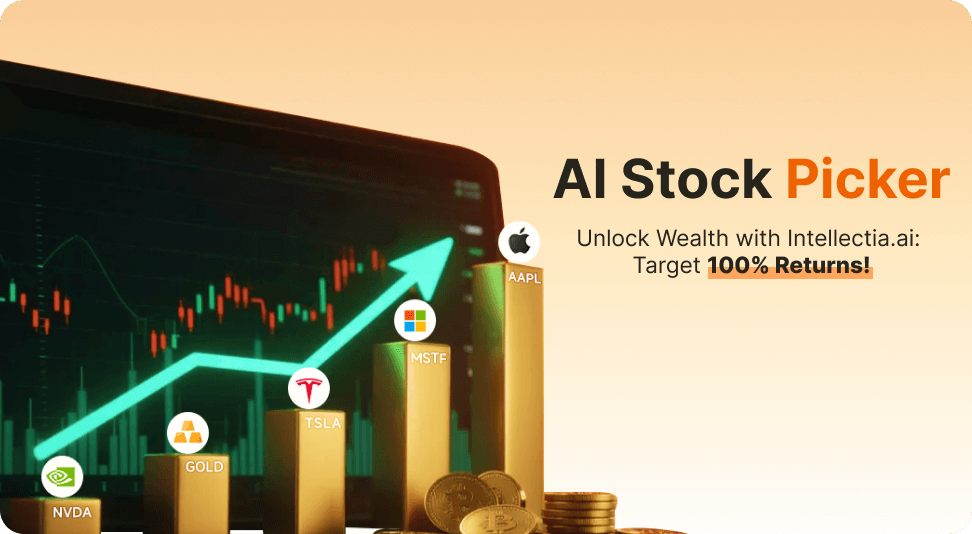The prospect of Apple's stock (AAPL) reaching $1,000 per share continues to capture investor attention in 2025. With Apple’s 2026–2030 stock forecast showing steady growth potential, many wonder whether its strong innovation, consistent cash flow, and brand dominance could eventually push AAPL toward the $1,000 milestone.

When Did Apple Go Public?
Apple Inc., one of the most iconic technology companies globally, had its Initial Public Offering (IPO) on December 12, 1980. Here are some key details about Apple's IPO:
IPO Date: December 12, 1980

Offering Price: The shares were offered at $22 per share.
Performance on First Day: The stock price increased by about 32% on the first day, closing at approximately $29.
Significance: Apple's IPO was significant as it generated more capital than any IPO since Ford Motor Company in 1956. It created instant millionaires among some of the company's original employees.
Stock Splits: Since the IPO, Apple has had several stock splits, affecting the adjusted initial offering price with the last Apple stock split being in 2020 at a 4-1 split.
Apple's Historical Stock Performance
Steve Jobs' return to Apple in July 1997 marked a pivotal moment for the company. He immediately streamlined the product line, cancelling 70% of existing products and securing a critical $150 million investment from Microsoft to support macOS. By the end of his first year back, Jobs had transformed Apple's financial landscape, turning a significant deficit into a $309 million profit.
How Apple's Stock Performed from 1997 to 2007?
Upon Steve Jobs's return to Apple coupled with the changes he implemented, the company's stock grew from $0.10 in 1997 to $7.25 in 2007 this equates to a 7,150% return within the space of 10 years.
This era of rejuvenation was characterized by significant product innovations. In 1998, Apple launched the iMac, an all-in-one computer that sold 800,000 units within its first five months. This was followed by the introduction of the iPod in 2001, the iPhone in 2007, and the iPad in 2010, each fundamentally altering their respective markets and contributing significantly to Apple's revenue.

Apple Projected Stock Price 2026
Market analysts project Apple’s stock could reach between $270 and $290 by late 2025 or early 2026, reflecting around 10–15% upside from current levels. While short-term volatility remains, most analysts maintain a “buy” or “strong hold” rating based on Apple’s expanding services revenue and AI-driven product strategy.

Key points to drive Apple's stock price through 2026:
Market Expansion: Apple's shares are projected to experience sustained growth due to deep penetration in developing markets, particularly in India and potentially Africa. This expansion strategy could significantly enhance Apple's global footprint and customer base.
Demographic Trends: Apple's stronghold among younger demographics is anticipated to play a pivotal role in its growth narrative. With a substantial preference for iPhones among teenagers, Apple is poised to secure a steady influx of loyal customers transitioning into adulthood. This demographic trend reflects a continuous demand for Apple's products and services, underpinning the company's revenue streams well into the future.
Innovation and Technology: Advancements in AR/VR, notably through its Vision Pro headset and future iterations, are expected to cement Apple’s position as a key player in emerging tech sectors. The firm’s proactive approach to integrating its technology in new domains, like foldable smartphones and artificial intelligence, also indicates potential new revenue channels and partnerships.
Economic Conditions: The anticipated reduction in interest rates could provide a favourable investment backdrop, potentially making tech stocks like Apple more attractive to investors.

Will Apple Stock Reach $1000?
Apple's current stock price is $246.49, with a P/E ratio of 37.44 and a dividend yield of 0.43%. While Apple is a market leader with strong profitability (Net Margin: 15.52%, ROE: 157.41%), its valuation is already elevated compared to historical averages and peers.
A $1,000 share price would translate to a market cap exceeding $15 trillion, necessitating extraordinary growth in Apple's revenue. Based on historical relationships between revenue, stock price, and market cap, it can be inferred that Apple would need to achieve a 411.7% increase in revenue to reach a $1,000 per share valuation.
Assuming no expansion or compression for Apple's trading multiples and Apple maintaining stable profitability metrics.

Should I Buy Apple Stock Now?
Apple’s stock remains a solid long-term investment due to its strong ecosystem, high-margin services, and innovation in AI. However, its current valuation may limit short-term gains. Investors should consider potential risks and monitor developments in AI and services growth.
Overall, the combination of strategic market expansion, dominance among younger consumers, and technological innovation could position Apple for significant growth and continued leadership in the tech industry through 2026 and the next decade. Most analysts recommend holding Apple stock for long-term gains, citing strong fundamentals and a resilient ecosystem. For new investors, AAPL remains a safe, blue-chip exposure to the AI and consumer tech sector.
Staying ahead in a fast-moving market like Apple’s requires data-driven insights. With Intellectia.ai’s AI Screener, investors can track real-time stock sentiment, identify undervalued opportunities, and compare Apple’s performance against other tech giants.
Whether you’re monitoring AAPL’s fundamentals or exploring other AI-related stocks, Intellectia.ai empowers you with smarter, faster market analysis.
Conclusion
While Apple reaching $1,000 per share is unlikely in the near term, steady innovation, AI integration, and expanding global demand could drive meaningful long-term growth. For investors seeking stability with upside potential, AAPL remains one of the strongest long-term tech stocks to hold through 2030.











